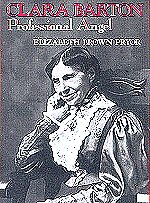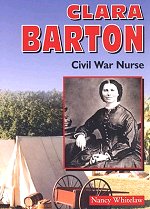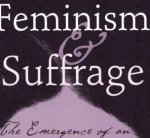| Young Americans who become more involved in the American Red Cross should realize they are joining a long line of youth volunteers and blood donors before them. This line stretches all the way back to the early days of the American Red Cross and rises to great achievement during periods of national crisis.
The first known youth activity related to the American Red Cross took place in Waterford, Pennsylvania, in 1884. Six children put on a play that raised over 50 dollars that they donated to the then three-year-old American Red Cross. Red Cross founder Clara Barton reportedly used the money to aid a family victimized by the severe Midwestern flood of 1884. "Sometime again when you want money to help you in your good work, " the children wrote to Barton, "call on the Little Six." Thus began the tradition of youth fund-raising which continues to this day.
By the 1890s, the appeal of junior memberships was felt in many countries that had started Red Cross societies. Here in America, the 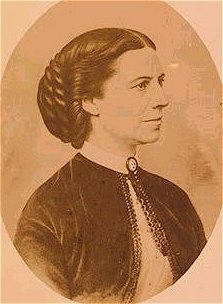 idea that "all schools � be organized into Junior auxiliary societies" was advanced in 1892 but failed to win national acceptance at that time. Instead, some individual Red Cross chapters set up their own "youth auxiliaries" which were tied to local schools. Students engaged in their own socially worthwhile programs and worked side-by-side with adults in disaster relief, fund-raising, and other chapter activities. In 1898, students became involved for the first time in a war effort when they assisted adult Red Cross members in providing medical support and comfort to American soldiers and their families during and after the Spanish-American War. idea that "all schools � be organized into Junior auxiliary societies" was advanced in 1892 but failed to win national acceptance at that time. Instead, some individual Red Cross chapters set up their own "youth auxiliaries" which were tied to local schools. Students engaged in their own socially worthwhile programs and worked side-by-side with adults in disaster relief, fund-raising, and other chapter activities. In 1898, students became involved for the first time in a war effort when they assisted adult Red Cross members in providing medical support and comfort to American soldiers and their families during and after the Spanish-American War.
It was another war effort that eventually brought about the formation of the American Junior Red Cross. In 1917, when the United States entered World war I, some of the nation's leading educators and American Red Cross officials evolved a plan for a nationwide partnership between schools and the Red Cross. On September 15, 1917, President Wilson officially announced the formation of the Junior Red Cross, and asked American youth "Is not this perhaps the chance for which you have been looking to give your time and efforts in some measure to meet our national needs (in wartime)?"
Youth answered the President's question with a resounding. Yes! With membership costing only 25-cents per student annually, Junior Red Cross enrollment reached 8 million within its first year and peaked at 11 million by 1919. Of greater importance than the number of elementary and secondary students who become members were the many vital services they performed on their own and alongside adults during the War. They made and collected clothing for war victims, produced hospital supplies, and built furniture for hospitals and convalescent homes. For youth in war-torn areas overseas, they prepared and sent "Friendship Boxes" (containing school and personal items). On the home front, they promoted food conservation projects and worked in Victory Gardens (vegetable gardens that added to the nation's food supply). They also stepped in to help local chapters perform their regular functions, including first aid training and disaster relief and they participated in all Red Cross membership and war fund campaigns. The Junior Red Cross made 10 percent of the total value of Red Cross products produced during wartime. Junior Red Cross contributions to Red Cross funds during the war period totaled an amazing $3,677,380.00
Although the war ended 1918, a major focus of Junior Red Cross continued to be the assistance of war victims and refugees. The "National Children's Fund," made up of contributions from Red Cross youth, was established in 1919 to provide "relief funds for rehabilitation of child life in war stricken Europe." The Junior Red Cross also contributed towards the fight against the influenza pandemic which followed the war in Europe and America.
While public support for the American Red Cross, including the Junior Red Cross, ran very high during wartime, need for such an organization became less apparent for some people in peacetime. In fact, some argued that the Red Cross ought to fold up shop until another armed conflict justified in its reemergence.
Red Cross leaders strongly rejected this notion. Instead, they oriented the Red Cross towards disaster relief, public health, and continuing service to veterans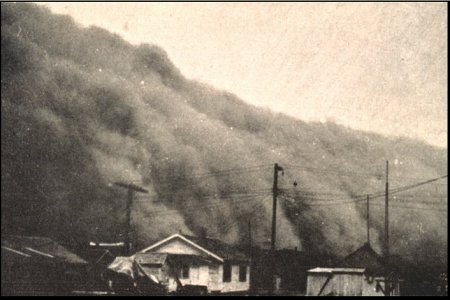 still needing medical and emotional support after war. They also recognized the value of the Junior Red Cross for teaching good citizenship and for instilling in youth a spirit of internationalism. Although junior membership dropped significantly after the war period, the National Children's Fund continued to support orphanages and educational and recreational programs Europe and Junior Red Cross members continued to be active in a variety of programs as home. still needing medical and emotional support after war. They also recognized the value of the Junior Red Cross for teaching good citizenship and for instilling in youth a spirit of internationalism. Although junior membership dropped significantly after the war period, the National Children's Fund continued to support orphanages and educational and recreational programs Europe and Junior Red Cross members continued to be active in a variety of programs as home.
The Junior Red Cross News, the first of several monthly publications issued during the school years, appeared in 1919 and became immensely popular among students. The first use of National Children's Fund's money for domestic disaster relief occurred in 1920 when funds were distributed to children for relief from a Midwestern tornado. Beginning in 1923, funds were used to support Indian schools in the American Southwest. On the international scene, the Junior Red Cross continued shipping Friendship Boxes to children overseas and correspondence projects were initiated between American youth and young people in other countries. As an indication of their growing importance in the organization, Junior Red Cross delegates attended a National Red Cross convention as voting members for the first time in 1927.
In the next decade, membership in the Junior Red Cross fluctuated from a low 6.6 million in 1933 to high of 9 million in 1938. In the early 1930s, the Depression and the severe drought, which produced the "Dust Bowl" in the Midwest, dominated Junior Red Cross activities. The Junior Red Cross assisted in the distribution of surplus wheat and cotton, the collection of clothing and food, and the canning of fruits and vegetables. In the latter half of the 1939s, the Junior Red Cross focused on relief projects for children who were victims of domestic fires and floods. Activities included the establishment of recreational centers, the production and distribution of toys, clothes, and educational supplies, and the appropriation of financial aid from the National Children's Fund.
With the advent of World War II, Junior Red Cross membership surged again, along with a broad expansion of activities. Membership grew from 8.5 million in 1940 to almost 20 million in 1945. College units were added in 1942 at a time when virtually every campus in the country hosted some kind of Red Cross activity, from student groups to Red Cross courses on wartime and disaster relief subjects.
Junior Red Cross activities during World War II ranged from the production of 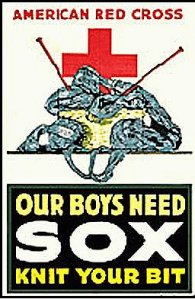 clothing, toys, furniture, and art works to entertainment and recreational programs at military camps and hospitals in the U.S. Junior Red Cross members also participated in domestic conservation campaigns (saving and collecting waste papers, textile, metals, fats, and foods) and worked in Victory Gardens again. As before, they assisted individual chapters in a variety of ways: as staff aides, in kitchens and hospitals, with child care, in disaster services, with a bicycle corps as an adjunct to the Red Cross Motor Corps, on war fund campaigns, and for the first time in the recruitment of blood donors. The peak years of youth activity were 1942-43 when youth involvement in community action and international service projects were reported by 90 percent of all Red Cross chapters. clothing, toys, furniture, and art works to entertainment and recreational programs at military camps and hospitals in the U.S. Junior Red Cross members also participated in domestic conservation campaigns (saving and collecting waste papers, textile, metals, fats, and foods) and worked in Victory Gardens again. As before, they assisted individual chapters in a variety of ways: as staff aides, in kitchens and hospitals, with child care, in disaster services, with a bicycle corps as an adjunct to the Red Cross Motor Corps, on war fund campaigns, and for the first time in the recruitment of blood donors. The peak years of youth activity were 1942-43 when youth involvement in community action and international service projects were reported by 90 percent of all Red Cross chapters.
Following Wold War II, the Junior Red Cross faced the same problem it did after the First World War: how to sustain membership and a viable program in peacetime. As before, the Junior Red Cross concentrated on international service and domestic programs that provided public assistance and, in the process, nutured good citizenship. While some programs were traditional in nature, such as assistance to war veterans and their families, disaster relief, and public health, others were new. The Red Cross introduced an International Student Work-Study Program in 1946 which brought American and foreign secondary and college students together, A "High School Chest Program" was begun in 1947, with each chest containing supplies for 50 school children. They were distributed to children overseas and in the United States where school supplies had been lost in natural disasters. An International School Art Program was introduced which sent student paintings interpreting American life to schools in other lands. Red Cross Leadership Development Centers were created to provide training for junior and senior high school and college students.
Despite these programs, membership in the Junior Red Cross began a decline after World War II that is only now being reversed. Competition from other youth groups, such as the Boy and Girl Scouts and the YMCA, became more pronounced from the late 1940s onwards. Teacher union restrictions, established in the 1960s, made Red Cross school programs an after-school activity conducted by teachers on a voluntary basis. The result was a decline in teacher involvement. While wars in Korean and Vietnam provided many opportunities for Red Cross service, they did not experience sharp new increases in membership.
Nevertheless, youth participation in the American Red Cross is an increasingly attractive option as new attitudes and programs have been introduced. Since the late 1960s, the blending of youth volunteers into the mainstream of Red Cross service has gained wide support and popularity. The Red Cross established a Youth Services unit in 1970 to better address the needs of youth volunteers at the highest organizational level. In 1992, the Red Cross Board of Governors adopted a national Youth Agenda as a blueprint for national headquarters and local units to affirm their continued commitment to youth involvement in the Red Cross.
The twenty-first century has been an exciting time for more than 300,000 youth and young adult Red Cross volunteers. In 2005, November was designated National Youth Involvement Month at the Red Cross, a month to recognize and promote youth programs and youth volunteers across the U.S. In recent years young volunteers have raised hundreds of thousands of dollars to fight Measles in Africa, helping to vaccinate 217 million children in more than 40 African countries, saving more than 1.2 million lives. And in 2007 the Red Cross will be celebrating the 90 th Anniversary of the Junior Red Cross. What better time to be involved in the life saving mission of the American Red Cross? To volunteer, contact your local Red Cross chapter.
|
